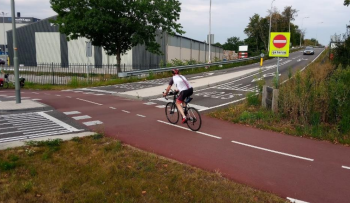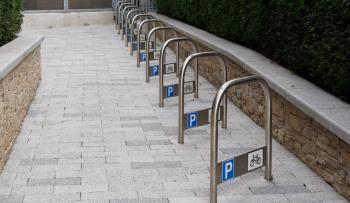
Want to become a cycling nation? Get a national cycling strategy
It is difficult if not impossible to measure the direct impact on levels of cycling that come with a national cycling strategy. Yet ECF analysis suggests a strong correlation between being or becoming a successful cycling nation and having a pro-active national government in places that pushes for cycling.
While national cycling policies have been around now for some 25 years with the Dutch Master Plan ‘Fiets’ (bicycle) being published in 1990, it was probably the 1st German National Cycling Strategy from 2002 that triggered a process where today about half of EU Member States have a national cycling strategy in place. This list is likely to get longer as other countries such as the UK, Sweden and Croatia are currently elaborating their own national cycling strategies. With the upcoming pan-European Master Plan for Cycling Promotion we can have sound hope that more and more countries - both inside and outside the European Union - will develop national cycling policy frameworks over the next years. The question that rightly might be asked is: Have all these national strategies been actually successful in promoting cycling? In everyday lives, cycling occurs locally. Did more people cycle to work or to school because of the national government advocates more cycling?
Frankly, this is a tough one. Cycling strategies can exist on paper but never get implemented due to all sorts of reasons. Funding can be insufficient as there can be a lack of coordination both between ministries as well as between different levels of government. And there are many other factors at work that impact cycling, such as land-use and town-planning or wider socioeconomic trends. Yet to get an idea whether the existing national cycling strategies have an impact on the state of cycling in a country, we put those findings against the results of the ECF Cycling Barometer which ranks EU Member States on five comparable indicators.
ECF also looked at the performance of the capital cities as an indicator for interaction between the national and local level. The table below supports two findings: 1) All countries that have a current national cycling policy in place (highlighted in green) rank among the better performing countries, with the exception of Ireland. The three countries highlighted in yellow either used to have a national cycling policy in place (NL, UK) or in the case of Belgium had an unofficial strategy in place, i.e. a Master Plan that was never officially approved by government but served as a guiding instrument to the administration. No country without a current or past national cycling strategy (highlighted in red) makes it into the upper half of the ECF Cycling Barometer. 2) ECF also looked at capital cities. In all EU Member States these are the largest cities where many national trends emerge and then become mainstream by spilling over to the rest of the nation. It’s also the place where national governments and departments are situated, with the exception of the Netherlands. ECF found that in all countries with a current national cycling strategy, the capital city has a measurable cycling growth objective in place. While we did not look at who came first – the capital city or the national level – it seems to suggest a positive interaction between the different levels of government. ECF found only two capital cities – Rome and Madrid – that escaped the inactivity of their national government.
| Country ranking in ECF Cycling Barometer | 2015 | 2013 | Evolution | Capital city | Growth objective (adjusted over a 10-year period) |
| Denmark | 1 | 1 | 0 | Copenhagen | 43% |
| Netherlands | 2 | 1 | -1 | Amsterdam | - |
| Sweden | 3 | 3 | 0 | Stockholm | 100% |
| Finland | 4 | 4 | 0 | Helsinki | 36% |
| Germany | 5 | 5 | 0 | Berlin | 38 – 54% |
| Belgium | 6 | 6 | 0 | Brussels | 186% |
| Slovenia | 7 | 12 | 5 | Ljubljana | 67% |
| Hungary | 8 | 8 | 0 | Budapest | 400% |
| Austria | 9 | 7 | -2 | Vienna | 67% |
| Slovakia | 10 | 9 | -1 | Bratislava | 400% |
| United Kingdom | 11 | 10 | -1 | London | 150% |
| France | 12 | 11 | -1 | Paris | 650% |
| Luxembourg | 13 | 19 | 6 | Luxembourg | 186% |
| Czech Republic | 14 | 13 | -1 | Prague | 400 – 600% |
| Lithuania | 15 | 20 | 5 | Vilnius | - |
| Croatia | 16 | n/a | n/a | Zagreb | - |
| Italy | 17 | 15 | -2 | Rome | 567% |
| Spain | 18 | 23 | 5 | Madrid | 200% |
| Estonia | 19 | 15 | -4 | Tallinn | - |
| Poland | 20 | 20 | 0 | Warsaw | - |
| Bulgaria | 21 | 25 | 4 | Sofia | - |
| Ireland | 21 | 14 | -7 | Dublin | 216% |
| Latvia | 21 | 17 | -4 | Riga | - |
| Greece | 24 | 17 | -7 | Athens | - |
| Malta | 24 | 27 | 3 | La Valetta | - |
| Cyprus | 26 | 22 | -4 | Nicosia | - |
| Portugal | 27 | 23 | -4 | Lisbon | - |
| Romania | 28 | 25 | -3 | Bucarest | - |
Conclusion
Countries need to develop and implement a national cycling strategy to become a cycling nation. We cannot establish a causality due to the lack of evidence (e.g. we have little comparative knowledge about the quality and impact of national cycling policies), but the findings suggest a strong correlation.
Outlook
The pan-European Master Plan for Cycling Promotion will advise its 56 Member countries on how to support cycling by the national government. While already under development, the formal adoption of this Master Plan will not happen before 2019. Closer to date, on October 7, 2015 the EU Transport Ministers will discuss in an informal Council meeting in Luxembourg cycling as a mode of transportation. ECF is advocating the EU to get its own EU Roadmap for Cycling.
Regions:
- Log in to post comments
Contact the author
Recent news!
Contact Us
Avenue des Arts, 7-8
Postal address: Rue de la Charité, 22
1210 Brussels, Belgium









